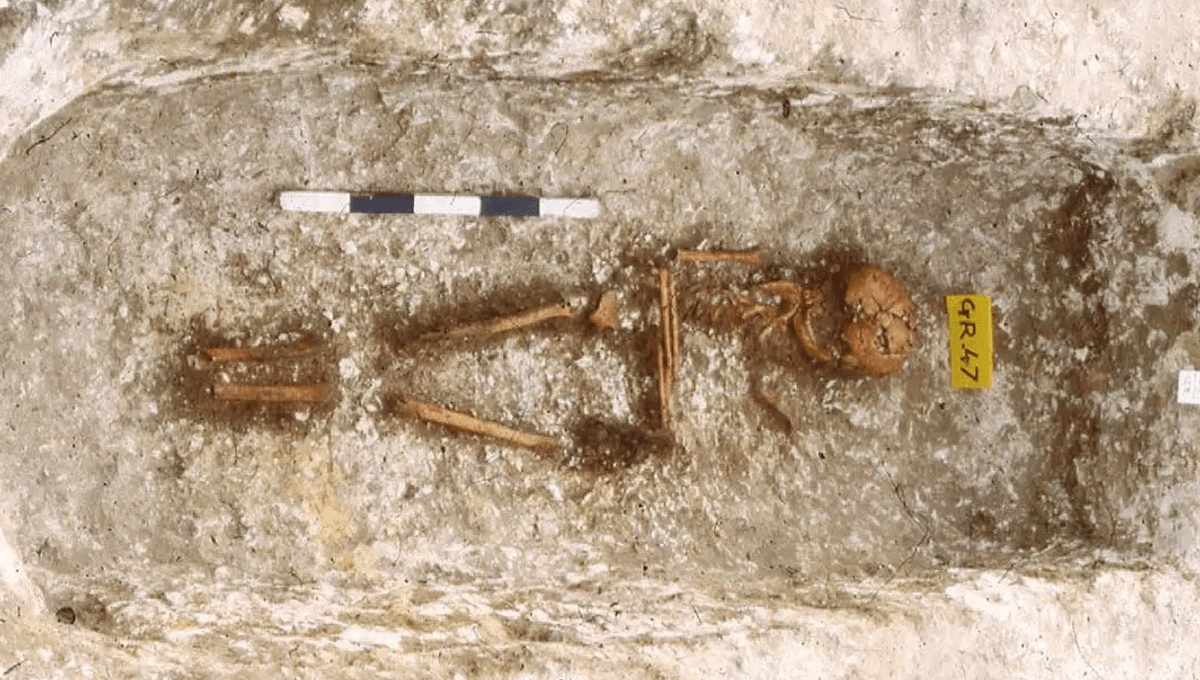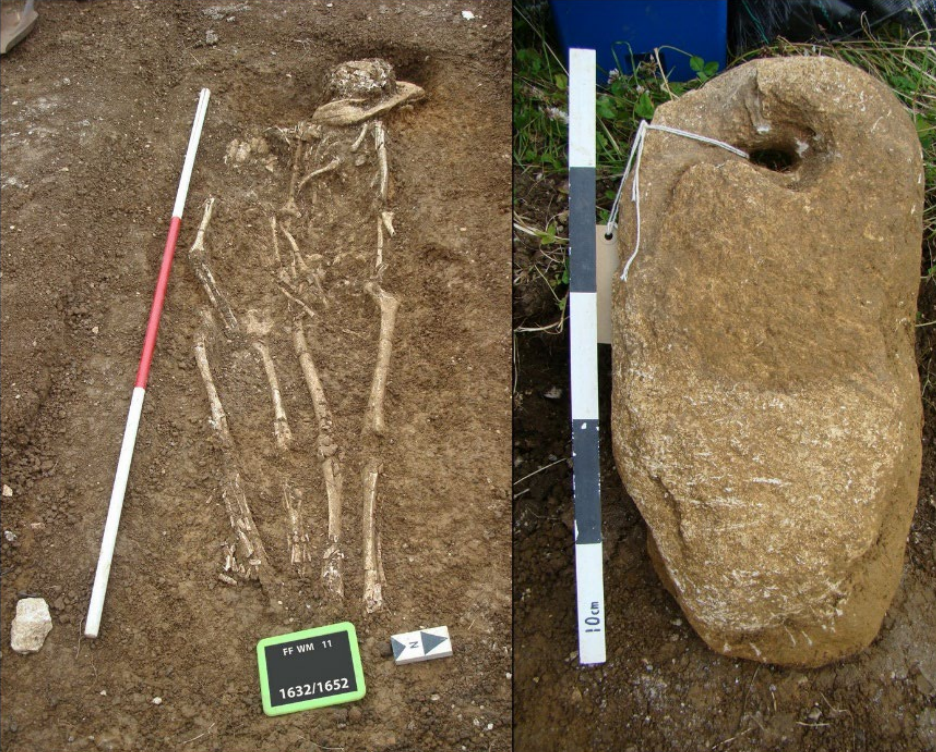Over 1,300-Year-Old Skeletons Buried In England Had West African Roots

Over 1,300-Year-Old Skeletons Buried In England Had West African Roots
More than 1,300 years ago, a boy and a girl were buried on two sides of England’s south coast. Today, their DNA reveals they both had West African roots, a surprising find that suggests early medieval Europe was far more connected and cosmopolitan than the history books suggest.
The rest of this article is behind a paywall. Please sign in or subscribe to access the full content. Archaeologists made the discovery through genetic analysis of remains from two early Anglo-Saxon cemeteries, both dating to the 7th century CE, along the south coast of England: one at Updown in Kent (in the east) and the other at Worth Matravers in Dorset (in the south west). Most of the people buried here had either northern European or western British and Irish ancestry, as expected, but two individuals stood out for their entirely unexpected genetic profile. The DNA analysis showed that the unrelated pair both had recent ancestors, most likely their grandparents, who were from sub-Saharan West Africa. The person in Updown was a female who was likely to be 11 to 13 years old when she died. Her maternal DNA belonged to a lineage common in northern Europe, but her overall genetic makeup showed 20 to 40 percent ancestry from sub-Saharan Africa, particularly related to present-day West African groups like the Yoruba, Mende, Mandenka, and Esan people. The Worth Matravers individual was a young male who had a very similar mix of northern European and sub-Saharan African ancestry. Human skeletal remains in a double burial at the Worth Matravers cemetery, along with the anchor stone found underneath the older individual’s head. Image credit: Lilian Ladle, modified by Ceiridwen J. Edwards The researchers say their discovery “adds a new dimension” to our knowledge about migration and the exchange of cultures in early medieval Europe. Many assume Europe’s relationship with Africa began in the 15th-century Age of Discovery, snowballing into the brutal era of colonization. In truth, the two continents had been connected for thousands of years. It’s well established that the Roman Empire traded and warred with cultures in North Africa, most notably Egypt and Carthage. The Romans even recruited soldiers from North Africa. Ancient writers like Herodotus and Pliny knew a little about sub-Saharan Africa too, often through trade goods like gold, ivory, and ebony. However, this contact was sporadic, largely limited to traders, and concentrated along the Mediterranean coast. By the 7th century CE, northern Europe felt the pull of the Byzantine Empire, the spiritual heir of the Roman Empire that now ruled much of North Africa. The researchers believe this is the key to understanding the unexpected ancestry of the pair from Updown and Worth Matravers. They argue that one of their parents likely originated in the southern Sahel, just south of the Sahara, between the mid-500s and early 600s CE. This lines up with the time of Byzantine control of North Africa, when trade routes and cultural links were booming. It’s most likely that these individuals were moving opportunistically along these trade and travel networks, not necessarily through large-scale slavery or trafficking, which was driven by the Islamic Caliphates at the time. “It is significant that it is human DNA—and therefore the movement of people, and not just objects—that is now starting to reveal the nature of long-distance interaction to the continent, Byzantium and sub-Saharan Africa,” Professor Duncan Sayer from the University of Lancashire, lead author of one of the studies, said in a statement. “What is fascinating about these two individuals is that this international connection is found in both the east and west of Britain. Updown is right in the centre of the early Anglo-Saxon cultural zone and Worth Matravers, by contrast, is just outside its periphery in the subRoman west.” “Our joint results emphasise the cosmopolitan nature of England in the early medieval period, pointing to a diverse population with far-flung connections who were, nonetheless, fully integrated into the fabric of daily life,” added Dr Ceiridwen J. Edwards from the University of Huddersfield, lead author of the other study. The two new studies are published in the journal Antiquity (here and here).


